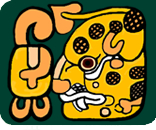Places to Visit in Xela
Quetzaltenango's railroad station, 1km east of the Templo de Minerva along 4a Calle, lay dormant for years until the city converted it into this centre, which now houses schools of art and dance, plus three interesting museums.
The Museo Ixkik' is devoted to Maya weaving and traditional outfits, while some 200 paintings by Guatemala's leading modernists are exhibited
Museo de Arte , including works by Efraín Recinos, Juan Antonio Franco and the landscape artist José Luis Álvarez.
The Museo del Ferrocarril de los Altos covers the ambitious rail project that connected Quetzaltenango to the Pacific Coast but operated for just three years from 1930 to 1933.
Parque Centro América : Most of Xela's sights crowd in and around the broad central plaza. The original version, designed by Italian architect Alberto Porta in the 1800s, comprised two separate parks; these were combined in a 1930s update into its current oblong shape. Most notable of the monuments scattered along its expanse is a rotunda of Ionic columns dedicated to the composer Rafael Álvarez Ovalle.
In the center of the plaza is a pillar dedicated to Justo Rufino Barrios, the 19th-century president whose 'reforms' transferred land ownership from Maya peasants to coffee-plantation owners.
Templo Minerva: Rising incongruously from an island in the middle of traffic-choked 4a Calle, the temple was erected by dictator Estrada Cabrera to honor the Roman goddess of education and to inspire Guatemalans to new heights of learning. Bizarre contrast notwithstanding, it makes a handy shelter during a rainstorm.
Museo de Arte Natural: The natural history museum holds a hodgepodge of Maya artifacts, vintage photos, dried leaves, old coins, marimbas, sports trophies, stuffed mammals and birds, all displayed in cases reminiscent of elementary school outings. Most interesting, perhaps, is the section devoted to the liberal revolution in Central American politics and the Estado de Los Altos, of which Quetzaltenango was once the capital.
Municipalidad: The Municipalidad, at the northeastern end of the park, was rebuilt after the 1902 earthquake in the grandiose neoclassical style so favored as a symbol of culture and refinement in this wild mountain country. Step inside to see a planted mosaic of the town seal.
Pasaje Enriquez: On the west side of the park between 4a and 5a Calles is Pasaje Enríquez, an imposing arcade patterned after a structure in Florence, Italy, housing an assortment of travel agencies, language institutes, cafes and one major bar.
Catedral: The ornately carved facade of the Iglesia del Espíritu Santo marks the site of the original 1532 construction, which was pulverized by the quakes of 1853 and 1902. The modern Metropolitan Cathedral behind it was finished in the 1990s.
Parque zoológico Minerva: About 2km northwest of Parque Centro América is this zoo/city park with spider monkeys, coyotes, turtles, gray foxes and numerous tropical birds, plus a few rides for children. The entrance is around the corner from the Templo de Minerva.
Teatro municipal Xela: Guatemala, is an important cultural center in the historic city center. In addition, it is the place where the award for Hispanic Americans Floral Games takes place every September.
Cerro el baul: also known as El Baúl, is a forested lava dome overlooking the valley of Quetzaltenango. It is located about 3 km north of the Almolonga volcano, at the south-eastern edge of the city of Quetzaltenango in Guatemalaand is one of the city's last remaining green areas.
Volcan Santa Maria: Santa María Volcano is part of the Sierra Madre range of volcanoes, which extends along the western edge of Guatemala, separated from the Pacific Ocean by a broad plain. The volcanoes are formed by the subduction of the Cocos Plate under theCaribbean Plate, which led to the formation of the Central America Volcanic Arc.
Hot Spring Fuentes Georginas: A superb natural spa in a spectacular setting, Fuentes Georginas is an 8km drive uphill from Zunil. It's named after the wife of 'benevolent dictator' Jorge Ubico, who customarily comandeered the installations on weekends for his personal use. Four pools of varying temperatures are fed by hot sulfur springs and framed by a steep, high wall of tropical vines, ferns and flowers. Though the setting is intensely tropical, the mountain air currents keep it deliciously cool through the day. There is a little 500m walk starting from beside the pool, worth doing to check out the birds and orchids.
Trails lead to two nearby volcanoes: Volcán Zunil (15km, about three hours one way) and Volcán Santo Tomás (25km, about five hours one way). Guides (essential) are available for either trip.
Cementerio:
It is one of the oldest in the country. Although it began as a burial ground cantonal grew over the years; the date of its foundation dates from 1840, which was ratified in the tomb Felix Lopez Monzon, second mayor of the city, died on April 2 of that year.
This sector is rich in tombs of different artistic trends like neo-classical, neo-Gothic, romantic and even clear Masonic influence.
Any questions? Contact us or register now!

